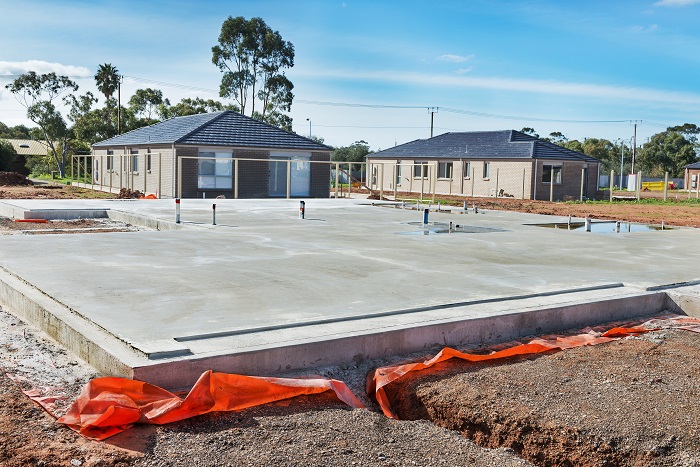
Whether you have a brick or concrete structure, you must know the basics of a slab foundation. Whether you’re building a new home or remodeling an existing system, you should know how to assess your slab foundation properly. A few warning signs of a problem include external and internal cracking. Windows and doors that stick may be indicative of a problem. If your floor is tiled, you may notice cracks that you couldn’t see before. You can learn more about this in the slab foundation Killeen TX.
Monolithic slab foundations
Unlike traditional basements and crawl spaces, a monolithic slab foundation is much easier to maintain than other foundation types. In addition to saving space and money, they also eliminate the need to heat air beneath the house. While basements and crawl spaces are great for storage, they also waste energy and money and cannot be repaired or replaced if something goes wrong. Monolithic slab foundations are the best option for homes that are near water and have an abundance of energy-efficient lighting.
Monolithic slab foundations are fast to construct. They are single, thick concrete slabs and don’t require precast footings. They also need very little reinforcement and are best for structures such as garage-like sheds. Because of their speedy construction, they’re an excellent option for new construction. However, if you’re not confident that your site is suitable, you should consult a professional before using a monolithic slab foundation.
A monolithic slab foundation has a concrete thickness of four inches at its thickest part. The concrete needs seven days to dry completely, and monolithic slab foundations can last as long as 50 years. Unlike traditional stem wall foundations, monolithic slab foundations require no joint between the concrete layers and can save money and time. Unlike stem walls, monolithic slab foundations are also easier to install than traditional building methods.
Monolithic Slab foundations are the easiest and fastest method of foundation construction. They are the most affordable and convenient type of foundation. Because you can pour them all at once, you won’t need to worry about uneven fill dirt. An adequately compacted earth base will keep the foundation flat. However, monolithic slab foundations are susceptible to cracking if your ground isn’t flat. Cracking is widespread around the exterior walls and large load-bearing areas. Because of these problems, some construction projects use floating slabs.
Monolithic slab foundations are one of the most popular foundation types available. They are much thinner than traditional foundations, four inches thick, and more durable than their conventional counterparts. Monolithic slab foundations require six inches of dirt to dig into the ground, and the slab rests on top. These slabs are also reinforced with rebar or wire mesh. You don’t need to have a perfectly level grade for these foundations.
Post-tensioned stem wall foundations
Post-tensioned stem wall foundations are a type of construction that uses a concrete footing with masonry walls. This foundation is more stable than other types because it uses dowels to connect the wall to the ground. They are typically 14 inches long and are used to support a poured slab. A footing must be poured first, followed by a stem wall to install a stem wall.
Typical post-tensioned stem walls are made of poured concrete but can also be supported with seismic-gridded conventional reinforcement. In addition to seismic-gridded mounts, post-tensioned walls are the most economical when the need for grouting is minimized or eliminated. The lower cost of materials used in post-tensioning walls more than compensates for the higher cost of the material. However, the top anchor must be placed on a solid masonry or grouted bond beam. Unlike a conventional anchor, it should be supported by concrete, mortar, or a concrete block.
A post-tensioned stem wall foundation is a versatile option that is ideal for many situations. They may be the best choice if you live in an area that does not support many other types of home constructions. These foundations function as stiff apparatus and will resist cracking, just like a boat. They also ride on the movements of the soil as it expands and contracts. This type of foundation is ideal for situations with structural challenges or issues that other foundations cannot handle.
The post-tension cable is easier to install than a conventional slab, and experts can tighten the wires once the slab is fully hardened. The only drawback of post-tensioned stem wall foundations is the additional space they require. If you are unsure whether post-tensioned stem wall foundations are right for you, consider hiring a construction company to install them. The extra cost is worth the peace of mind.